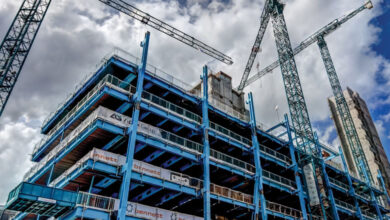Ireland facing construction worker shortage

Almost double the number of construction workers in Ireland are needed if the State is to meet its infrastructure demands over the next decade, the Irish Fiscal Advisory Council (IFAC) has warned.
In a report produced in late 2024, the IFAC estimates that 80,000 workers are needed to address Ireland’s infrastructure needs, which equates to 47 per cent increase from current levels.
The report, entitled Ireland’s Infrastructure Demands, states that Ireland’s infrastructure is lagging 25 per cent behind that of high-income European economies. The report also says that, since the economy is currently performing close to capacity, that there is minimal need for new government investment, especially given that many of the areas most in need of infrastructure are already among the highest per capita recipients of government spending.
Instead, the IFAC states: “Reallocating existing spending or increasing taxes could help offset any increase in government investment.”
On the planning system, the IFAC asserts that the planning and objection system has been a “barrier to investment”.
“At present, it means it takes longer and is more expensive to deliver major projects. Reforming the planning and objection system could aid the delivery of infrastructure. This would not cost a significant amount of money, relative to overall government spending,” the report states.
Asserting that it “remains to be seen how much” of an impact the new Planning and Development Act 2024 will have on infrastructure development, the report states that one of the key challenges in addressing these shortfalls in infrastructure is labour shortages, as many of these projects demand significant numbers of the same type of workers as the construction sector.
If productivity in the construction sector is not improved, the IFAC estimates that almost 80,000 additional construction workers would be needed to address infrastructure shortfalls. If productivity improved to average high-income European levels, less than 20,000 extra workers would be needed.
Overall, the report identifies infrastructure shortages in health, housing, transport, and electricity. Given the scale of these deficits, they will require investment plans over 10 years.
Speaking on RTÉ’s Morning Ireland in October 2024, IFAC senior economist Niall Conroy insisted that the findings of the report were “unsurprising” given the skills capacity lost in the construction sector in 2008 after the financial crisis, and that a need to build up capacity due to an increasing population, with pent-up demand for housing.
He added that builders in the State were not widely using modern methods of construction (MMC) utilised in other countries; a partial legacy of the 2008 recession and subsequent decline in building which took place.
Conroy stated that productivity in construction in Ireland is below other European countries and that the State needs to “get more bang for its buck” given the current high levels of public spending on infrastructure.





